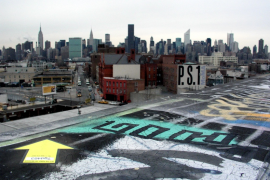I’ve been thinking about ambience (unsurprisingly) and what it might mean. I’ve been really keen to get away from the idea of ambience as simply “background/backdrop;” this doesn’t seem, to me, to be what we’re talking about at all. Or it didn’t. But maybe I’ve been doing background a disservice, or, rather, I think background gets done a disservice. Background isn’t unimportant, and it doesn’t just hide or get hidden — background does. Background is constant, consistent, imminent, but it’s also intrusive. Background structures, but not just as something that sets the scene. If ambience is background then I suspect that it’s because background is a conversational thing.
If you’re looking at a photo, a portrait, then the background matters. The subject may be a human head, but the background is what makes the portrait. There is no photo without the background; if the photo is so zoomed in that we can see no negative space then the portrait’s subject can become a background, flattening out, or the wall of the gallery or home becomes the new backdrop as we’re forced to step back. The head that is captured is always conditioned by the field that it’s against — a black background is about calling attention to the face; a city or rural backdrop places the subject as a supposed actor; something lurking implies threat; white absence implies loneliness, focus, or calm. The expression matters, the points of focus on the eyes, but the background tells us how to interpret all of these features too. We may start from whatever is in the crispest focus, but the background informs us about why and how to care; background is what makes a photo more than just a head made of ink or pixels.
Ambient literature is a literature that explores conversations with backgrounds, the spatial, emotional, technological, and historical signatures of a place, what’s already there, what it throws into relief, or even what it places into that space to be iterated against. All this means I’ve started thinking about palimpsests again.
Palimpsests, too, are layered texts, imaginative interplays of fore- and background. How it was taught to me, via, I now realise, an essay by Sarah Dillon (see below), is that a history of thinking of palimpsests emerges from a religious tradition. Interpretations of the bible were often written by monks on vellum, an expensive calf-skin leather, and when these interpretations lost favour the monasteries were left with a series of expensive and now useless, even dangerous, documents. So the monks treated the vellum with chemicals and scraped them clean to be used again — but it didn’t quite work. Over centuries, the mix of the original ink and the chemicals used to clean the leather sheets oxidised so that when some of these texts were later discovered by the ever-superstitious Victorians they found standard biblical interpretations in black ink with the red ghosts of older, heretical texts layered in the background. These are palimpsests, and their unquiet strata seem, to me, to be a useful way of thinking about literary ambience.
I came across Dillon’s work while researching Thomas De Quincey. De Quincey, in his Confessions of an English Opium Eater hints at the palimpsest as a model for memory:
there is no such thing as forgetting possible to the mind; a thousand accidents may, and will interpose a veil between our present consciousness and the secret inscriptions on the mind; accidents of the same sort will also rend away this veil; but alike, whether veiled or unveiled, the inscription remains for ever. (77)
In Suspiria de Profundis, a sequel of sorts to the Confessions, he invokes the palimpsest explicitly:
What else than a natural and mighty palimpsest is the human brain? Such a palimpsest is my brain; such a palimpsest, O reader! is yours. Everlasting layers of ideas, images, feelings, have fallen upon your brain softly as light. Each succession has seemed to bury all that went before. And yet in reality not one has been extinguished. (150)
Dillon notes that for De Quincey the mind is not “palimpsestic,” but palimpsestuous:
The O.E.D. definition states that the adjective from ‘palimpsest’ is palimpsestic. . . . Recently, this official adjective has been rejected in favour of ‘palimpsestuous’. ‘Palimpsestuous’ does not name something as, or as making, a palimpsest. Rather, it describes the complex (textual) relationality embodied in the palimpsest. Where ‘palimpsestic’ refers to the process of layering that produces a palimpsest, ‘palimpsestuous’ describes the structure with which one is presented as a result of that process, and the subsequent reappearance of the underlying script. (245)
So here’s where I want to start with my thinking of ambient palimpsests: layers matter because they’re dialogic, the talking goes back and forth. Paper speaks to screens, but screens speak to paper; today’s events are built on the past, but we can understand, often can only understand, the past through present actions. I’m reminded of Žižek’s thoughts on courtly romance: we can’t truly comprehend the rules of chivalry without understanding contemporary BDSM culture, and the former also helps us to negotiate the latter.
The palimpsest is an unstable echo of the past, an iteration and a symbiotic relationship and a new text all at once. It’s a figure of how we remember, how we write, and how we act — no memory without interacting layers of memories, no writing without competing quotations, and no action outside of one tradition or another. So ambience is all about background, just this kind of background, a lively one.
— Matt Hayler
References
De Quincey, Thomas, Confessions of an English Opium-Eater and Other Writings, Penguin Classics 2003
Dillon, Sarah ‘Reinscribing De Quincey’s Palimpsest: The Significance of the Palimpsest in Contemporary Literary and Cultural Studies’, Textual Practices, Vol. 19, Issue 3, Taylor and Francis, Sept. 2005, p243-26








